News
If Dyfed is the answer, what was the question?
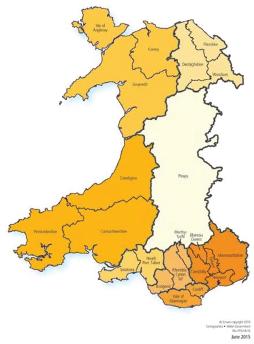
 LAST week Leighton Andrews, Public Services Minister for Wales, published the Welsh Government’s preferred plans for redrawing the map of local government in Wales. The plans unveiled had been well trailed and boil down to recreating the large unitary authorities that were part of the Welsh civic and political landscape for 22 years up to 1996.
LAST week Leighton Andrews, Public Services Minister for Wales, published the Welsh Government’s preferred plans for redrawing the map of local government in Wales. The plans unveiled had been well trailed and boil down to recreating the large unitary authorities that were part of the Welsh civic and political landscape for 22 years up to 1996.
In Wales’ fiercely independent west, the vision presented by the Welsh Government means recreating Dyfed. It appears, however, that the Welsh Government faces not only an uphill battle to get its reorganisation plans accepted by grassroots councillors, but also a stiff challenge to the prospect of even getting them on the statute book at all.
Council l eaders speak out
The issue highlighted by all of West Wales’ council leaders is that of cost and the threat to local accountability.
Cllr Ellen ap Gwynn, Leader of Ceredigion County Council, said: “Ceredigion County Council has previously voted unanimously against any merger proposals; this stance remains unchanged. Merging with any other authority would weaken local accountability, and so it is in the county’s citizens’ best interests to retain the sovereignty of Ceredigion. As the WLGA has recommended, local accountability would be best served by employing a combined authority model, which would consist of Ceredigion, Powys and Carmarthenshire cooperating on common strategic matters – an arrangement which would also negate any democratic deficit. Ceredigion remains committed to cooperate with other Councils to share resources and expertise in order to secure the most efficient and effective services possible. Bearing in mind that the Council has already made savings of £25 million over the past three years and needs to make similar savings over the next three years, concentrating on these proposals does not offer any benefits for the people of the county. It would be much better to see the estimated £268m cost of these proposals being spent on local services, rather than taking an empty, expensive step back in time.”
In a press statement last week, Cllr Emlyn Dole, Leader of Carmarthenshire, offered a more poetic view of the situation: “We have in Carmarthenshire a distinctiveness in culture, language and heritage – these are precious, and ours to retain and nurture. To that end, I firmly believe that Carmarthenshire should stand alone as a local authority in any future reorganisation of local government. One of my last acts as leader of the opposition on Carmarthenshire County Council, before becoming Leader, was to put down a motion on notice making this very point. I also put to council that maintaining our status as a county and an area authority offers us the best opportunity to safeguard and improve our services, and enables us to continue with the regeneration of our local economy. I was pleased to see cross party support, with all members – bar one – giving their full support. Having said that, I am not an inflexible Leader, and I will listen to all arguments for and against – indeed I do merit regional working arrangements.”
Cllr Jamie Adams, Leader of Pembrokeshire, was equally keen on retaining the distinctiveness of his county: “Seeing the maps for the first time, it is difficult to comment without some explanation of the rationale behind it. My position has always been: will the change improve the services we deliver to the public while at the same time reducing costs? If it doesn’t tick those two boxes, I think it is right to question the validity of this exercise. Apart from the obvious loss of local decision-making and accountability, I also have concerns about the real damage reorganisation could do to a very successful brand. I am referring to the Pembrokeshire name which is instantly recognisable to those living far outside our County and even beyond Wales. A large number of local businesses in tourism, agriculture, food and energy depend on, and identify strongly, with brand Pembrokeshire for their livelihood. I fear they will inevitably suffer if amalgamation goes ahead and in these trying times I believe it would be foolish to gamble with the health of our local economy.”
Big is beautiful ,but not always
There is no doubt that bigger authorities are better able to administer some key local government services. Strategic planning and transport, education and social services all demand scale. Size can bring vision, specialist expertise and economy and flexibility in the use of resources. For these services, big is beautiful and a reduction in the number of local authorities is right. It might even be that 8 or 9 authorities are too many, particularly in respect of strategic planning and transport.
But sometimes small is beautiful as well. Local authorities ought to be more than just the deliverers of services, and councils that don’t obviously connect with the places they serve struggle to be civic leaders and place-makers. The performance of Wales’ biggest councils also shows that big isn’t necessarily better.
Despite the clarion calls of the city-region lobby, most of Wales consists of small towns and villages, and we ignore the governance and provision of services in these communities at our peril. It remains to be seen if the proposed role for town and community councils will fill this gap.
Plaid Cymru has tapped into this picture with its own proposals for reorganisation. Plaid’s response is to create regional consortia to deliver the services identified above, while retaining a direct link with the local electorate by retaining other services at the existing county level. In a debate in the Senedd, Carwyn Jones di smi s sed this plan as ‘creating seven new quangos’, but Plaid’s policy seems to bear remarkable similarities to that favoured by the Welsh Local Government Association.
Cllr Bob Wellington CBE, Labour leader of Torfaen and head of the WLGA, says: “The sustainability of authorities in Wales is in question over the next three years and it is time to examine all options for reforming public services across the board. This means looking at greater integration of health and social care, freeing up authorities from Government bureaucracy and regulation and also empowering local communities through their councils.”
As Mike Hedges AM, presciently wrote in a paper for the Bevan Foundation: ‘The last 40 years have seen two reorganisations, the creation of the National Assembly for Wales and services such as water, post-16 education and Magistrates’ courts being taken out of local authority control. After almost a hundred years with a stable structure, Local government in Wales was reorganised into county and district Councils in 1974 and further reorganised into 22 unitary authorities in 1996. If we continue changing local government structures every 22 years then we are due an Act in 2016 and a new structure in place by 2018’.
The case for reform
Not all visions of reorganisation are as apocalyptic as those offered by local government leaders. Wales Politico carries an article which cites two unnamed senior council officials as accepting that the need and case for reorganisation is overwhelming. The article quotes a South Wales officer as saying: “Everyone in local government knows it is the correct decision. But obviously we can’t say that publicly, because so many jobs will go – including our own.”
Writing in Click on Wales, Geraint Talfarn Davies goes as far to say that: “Fewer larger counties should entail a rejuvenation of this bottom tier, in ways that would encourage really local action. It has been the missing dimension in the debate. Those who want to see real local engagement should opt for fewer councils at the top and genuinely local entities at the very bottom, even more local than the existing councils. The message from a public that seems increasingly more concerned by quality of delivery than by democratic form is, for God’s sake get on with it, do it better, get results.”
Describing the progress of the reforms as ‘snail-paced’ and ‘ham-fisted’, The Daily Wales observed: ‘The reality is that just as turkeys will never vote for Christmas, local authority leaders will never vote for their own abolition’.
Whatever the future holds for Welsh local government, it seems that – with no hope of getting legislation through before 2016’s Assembly elections – the debate is going to run and run.
The question is, who will blink first?
Crime
Swansea man dies weeks after release from troubled HMP Parc: Investigation launched
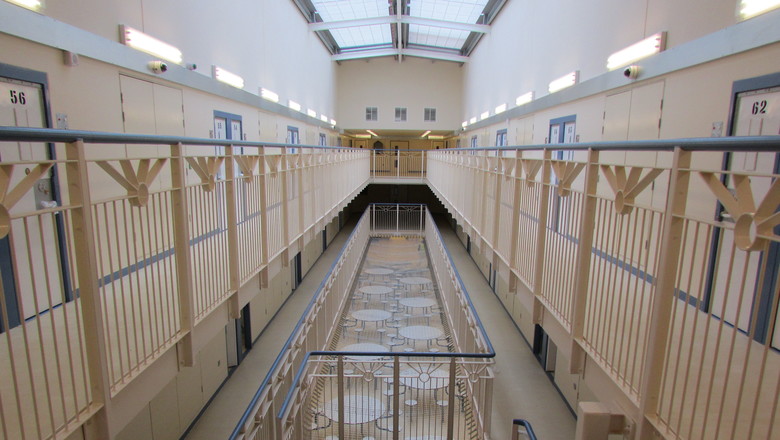
A SWANSEA man has died just weeks after being released from HMP Parc, the Bridgend prison now at the centre of a national crisis over inmate deaths and post-release failures.
Darren Thomas, aged 52, died on 13 November 2025 — less than a month after leaving custody. The Prisons and Probation Ombudsman (PPO) has confirmed an independent investigation into his death, which is currently listed as “in progress”.
Born on 9 April 1973, Mr Thomas had been under post-release supervision following a period at HMP/YOI Parc, the G4S-run prison that recorded seventeen deaths in custody in 2024 — the highest in the UK.
His last known legal appearance was at Swansea Crown Court in October 2024, where he stood trial accused of making a threatening phone call and two counts of criminal damage. During the hearing, reported by The Pembrokeshire Herald at the time, the court heard he made threats during a heated call on 5 October 2023.
Mr Thomas denied the allegations but was found guilty on all counts. He was sentenced to a custodial term, which led to his imprisonment at HMP Parc.
Parc: A prison in breakdown
HMP Parc has faced sustained criticism throughout 2024 and 2025. A damning unannounced inspection in January found:
- Severe self-harm incidents up 190%
- Violence against staff up 109%
- Synthetic drugs “easily accessible” across wings
- Overcrowding at 108% capacity
In the first three months of 2024 alone, ten men died at Parc — part of a wider cluster of twenty PPO-investigated deaths since 2022. Six occurred within three weeks, all linked to synthetic drug use.
Leaked staff messages in 2025 exposed a culture of indifference, including one officer writing: “Let’s push him to go tomorrow so we can drop him.”
Six G4S employees have been arrested since 2023 in connection with alleged assaults and misconduct.
The danger after release
Deaths shortly after release from custody are a growing national concern. Ministry of Justice data shows 620 people died while under community supervision in 2024–2025, with 62 deaths occurring within 14 days of release.
Short sentences — common at Parc — leave little time for effective rehabilitation or release planning. Homelessness, loss of drug tolerance and untreated mental-health conditions create a high-risk environment for those newly released.
The PPO investigates all such deaths to determine whether prisons or probation failed in their duties. Reports often take 6–12 months and can lead to recommendations.
A system at breaking point
The crisis at Parc reflects wider failures across UK prisons and probation. A July 2025 House of Lords report described the service as “not fit for purpose”. More than 500 people die in custody annually, with campaigners warning that private prisons such as Parc prioritise cost-cutting over care.
The PPO investigation into the death of Darren Thomas continues.
Crime
Woman stabbed partner in Haverfordwest before handing herself in
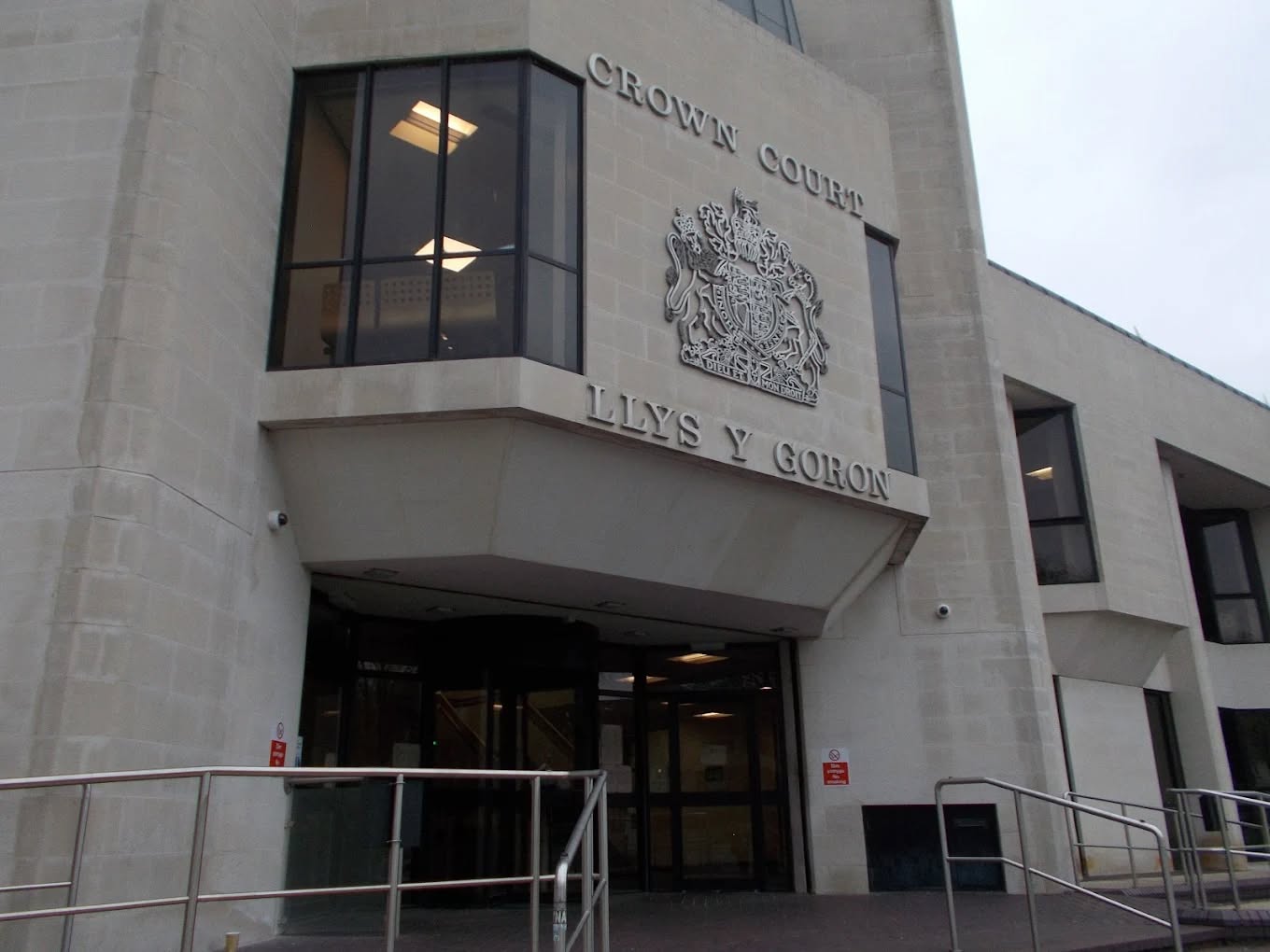
A WOMAN who stabbed her partner during a drug-fuelled episode walked straight into Haverfordwest Police Station and told officers what she had done, Swansea Crown Court has heard.
Amy Woolston, 22, of Dartmouth Street in Milford Haven, arrived at the station at around 8:00pm on June 13 and said: “I stabbed my ex-partner earlier… he’s alright and he let me walk off,” prosecutor Tom Scapens told the court.
The pair had taken acid together earlier in the day, and Woolston claimed she believed she could feel “stab marks in her back” before the incident.
Police find victim with four wounds
Officers went to the victim’s home to check on him. He was not there at first, but returned shortly afterwards. He appeared sober and told police: “Just a couple of things,” before pointing to injuries on his back.
He had three stab or puncture wounds to his back and another to his bicep.
The victim said that when he arrived home from the shop, Woolston was acting “a bit shifty”. After asking if she was alright, she grabbed something from the windowsill — described as either a knife or a shard of glass — and stabbed him.
He told officers he had “had worse from her before”, did not support a prosecution, and refused to go to hospital.
Defendant has long history of violence
Woolston pleaded guilty to unlawful wounding. The court heard she had amassed 20 previous convictions from 10 court appearances, including assaults, battery, and offences against emergency workers.
Defending, Dyfed Thomas said Woolston had longstanding mental health problems and had been off medication prescribed for paranoid schizophrenia at the time.
“She’s had a difficult upbringing,” he added, saying she was remorseful and now compliant with treatment.
Woolston was jailed for 12 months, but the court heard she has already served the equivalent time on remand and will be released imminently on a 12-month licence.
News
BBC apologises to Herald’s editor for inaccurate story
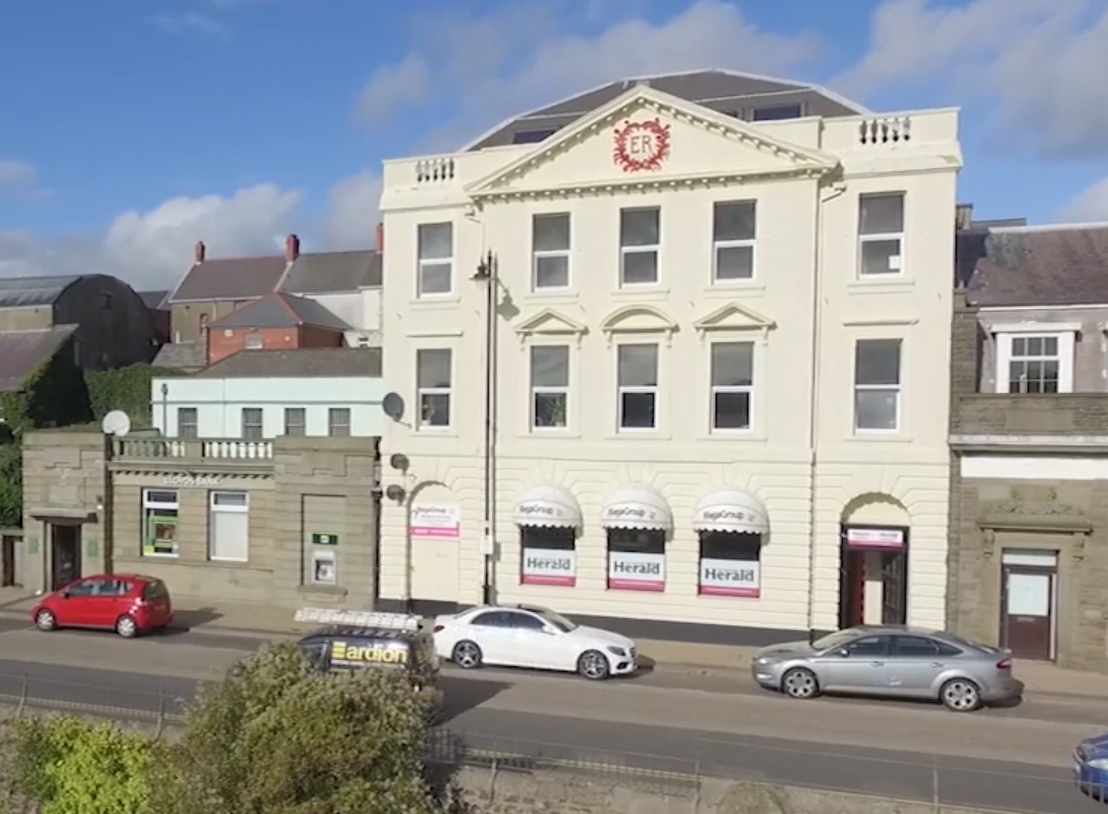
THE BBC has issued a formal apology and amended a six-year-old article written by BBC Wales Business Correspondent Huw Thomas after its Executive Complaints Unit ruled that the original headline and wording gave an “incorrect impression” that Herald editor Tom Sinclair was personally liable for tens of thousands of pounds in debt.

The 2019 report, originally headlined “Herald newspaper editor Tom Sinclair has £70,000 debts”, has now been changed.
The ECU found: “The wording of the article and its headline could have led readers to form the incorrect impression that the debt was Mr Sinclair’s personal responsibility… In that respect the article failed to meet the BBC’s standards of due accuracy.”
Mr Sinclair said: “I’m grateful to the ECU for the apology and for correcting the personal-liability impression that caused real harm for six years. However, the article still links the debts to ‘the group which publishes The Herald’ when in fact they related to printing companies that were dissolved two years before the Herald was founded in 2013. I have asked the BBC to add that final clarification so the record is completely accurate.”
A formal apology and correction of this kind from the BBC is extremely rare, especially for a story more than six years old.
-

 Crime2 days ago
Crime2 days agoDefendant denies using Sudocrem-covered finger to assault two-month-old baby
-
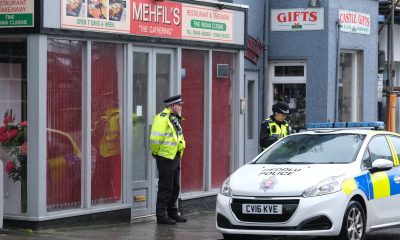
 Crime2 days ago
Crime2 days agoPembroke rape investigation dropped – one suspect now facing deportation
-

 Crime6 days ago
Crime6 days agoMan denies causing baby’s injuries as police interviews read to jury
-

 News2 days ago
News2 days agoBaby C trial: Mother breaks down in tears in the witness box
-

 Crime2 days ago
Crime2 days agoLifeboat crew member forced to stand down after being assaulted at Milford pub
-

 Crime3 days ago
Crime3 days agoDefendant denies causing injuries to two-month-old baby
-

 Crime3 days ago
Crime3 days agoPembrokeshire haven master admits endangering life after speedboat collision
-

 Crime18 hours ago
Crime18 hours agoMother admits “terrible idea” to let new partner change her baby’s nappies alone

















